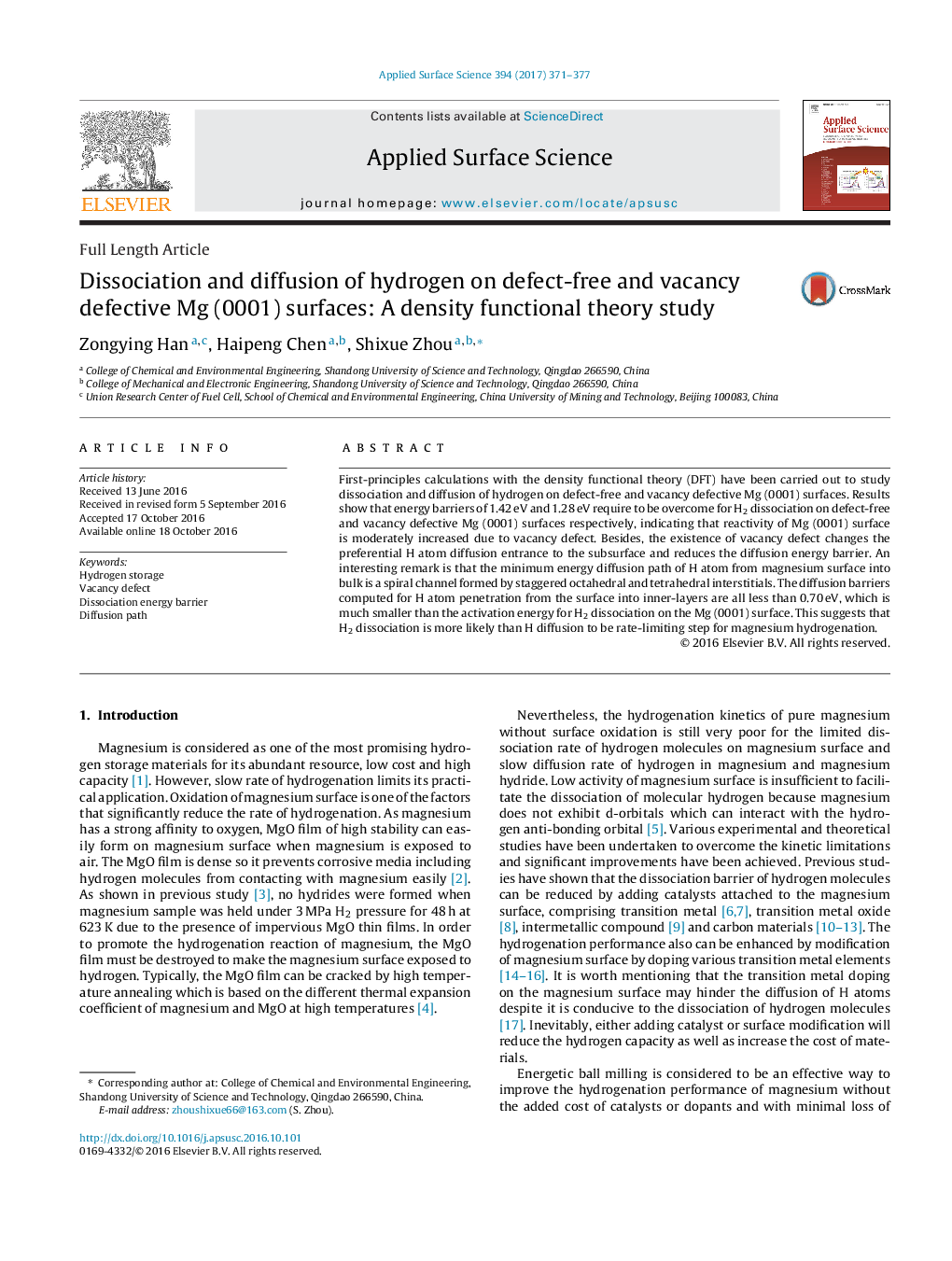| Article ID | Journal | Published Year | Pages | File Type |
|---|---|---|---|---|
| 5352919 | Applied Surface Science | 2017 | 7 Pages |
Abstract
First-principles calculations with the density functional theory (DFT) have been carried out to study dissociation and diffusion of hydrogen on defect-free and vacancy defective Mg (0001) surfaces. Results show that energy barriers of 1.42Â eV and 1.28Â eV require to be overcome for H2 dissociation on defect-free and vacancy defective Mg (0001) surfaces respectively, indicating that reactivity of Mg (0001) surface is moderately increased due to vacancy defect. Besides, the existence of vacancy defect changes the preferential H atom diffusion entrance to the subsurface and reduces the diffusion energy barrier. An interesting remark is that the minimum energy diffusion path of H atom from magnesium surface into bulk is a spiral channel formed by staggered octahedral and tetrahedral interstitials. The diffusion barriers computed for H atom penetration from the surface into inner-layers are all less than 0.70Â eV, which is much smaller than the activation energy for H2 dissociation on the Mg (0001) surface. This suggests that H2 dissociation is more likely than H diffusion to be rate-limiting step for magnesium hydrogenation.
Related Topics
Physical Sciences and Engineering
Chemistry
Physical and Theoretical Chemistry
Authors
Zongying Han, Haipeng Chen, Shixue Zhou,
